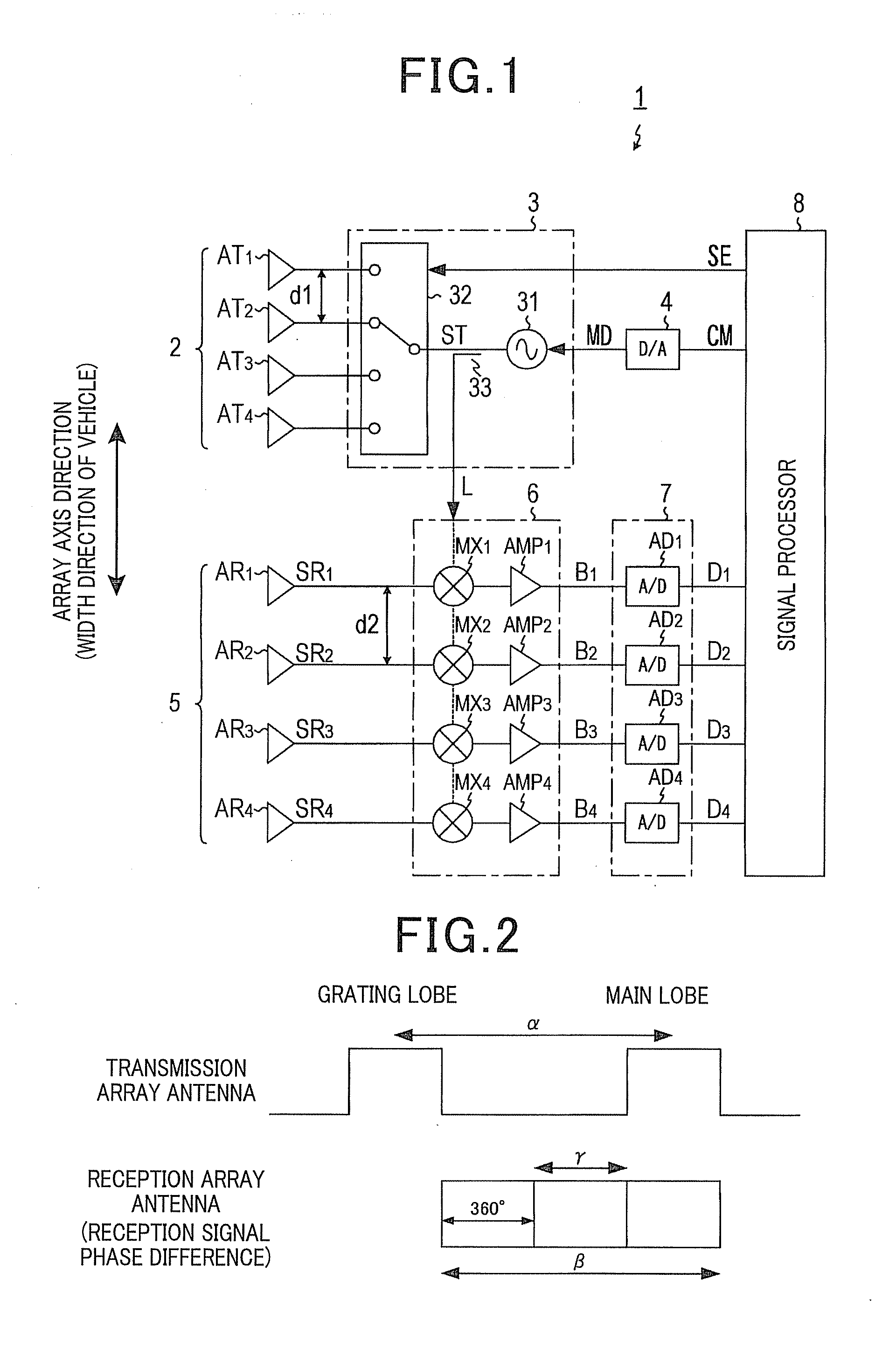Method and device for detecting azimuth
a technology of azimuth detection and method, applied in the direction of measurement devices, multi-channel direction-finding systems using radio waves, instruments, etc., can solve the problems of aliasing (ambiguity), difficult manufacturing, and the ability to identify azimuth only uniquely, so as to improve the resolution of azimuth detection, widen the range of azimuth detection, and simple configuration
- Summary
- Abstract
- Description
- Claims
- Application Information
AI Technical Summary
Benefits of technology
Problems solved by technology
Method used
Image
Examples
second embodiment
[0084]Referring to FIG. 8, the azimuth detecting device according to a second embodiment of the present invention will now be described.
[0085]A radar device 10 according to the second embodiment differs only in part from the radar device 1 according to the first embodiment. The difference will mainly be described.
[0086](Configuration)
[0087]As shown in FIG. 8, the radar device 10 includes a transmission / receiving array antenna 12 composed of an M-number (M=4 according to the second embodiment) of antenna elements A1 to AM arrayed in a single row, instead of the transmission array antenna 2 and the receiving array antenna 5.
[0088]In addition, the radar device 10 includes, instead of the selector 33, directional couplers DJ1 to DJN respectively provided in the antenna elements A1 to AN, and a selector 13 that supplies the transmission signal ST to any of the directional couplers DJ1 to DJN (and thus, the antenna elements A1 to AN) in adherence to the selection signal SE from the signal...
PUM
 Login to View More
Login to View More Abstract
Description
Claims
Application Information
 Login to View More
Login to View More - R&D
- Intellectual Property
- Life Sciences
- Materials
- Tech Scout
- Unparalleled Data Quality
- Higher Quality Content
- 60% Fewer Hallucinations
Browse by: Latest US Patents, China's latest patents, Technical Efficacy Thesaurus, Application Domain, Technology Topic, Popular Technical Reports.
© 2025 PatSnap. All rights reserved.Legal|Privacy policy|Modern Slavery Act Transparency Statement|Sitemap|About US| Contact US: help@patsnap.com



